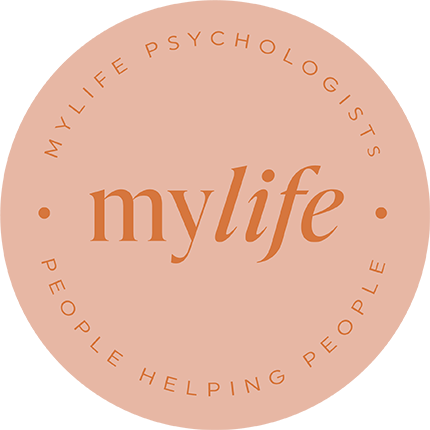Have you ever said “yes” when you really wanted to say “no”? Or stayed quiet to avoid conflict, only to feel frustrated later?
You’re not alone. Most of us find it hard to express our needs or opinions at times, especially if we don’t want to upset anyone or risk sounding “rude.” But learning to communicate assertively can help us express ourselves honestly, set boundaries, and strengthen relationships, without stepping on anyone’s toes.
Assertiveness isn’t about being pushy or demanding. It’s about balance, which involves communicating in a way that’s clear, calm, and respectful to both yourself and others. And the good news? Anyone can learn it.
What Does It Mean to Be Assertive?
We all have different ways of communicating. Most people fall somewhere on a spectrum between passive and aggressive, with assertive sitting right in the middle.
- Passive communication means staying quiet or giving in to avoid conflict. You might say, “It’s fine,” when it isn’t, or go along with plans you don’t actually want.
- Aggressive communication is when we express ourselves in a way that disregards others’ feelings, such as interrupting, raising our voice, or being overly critical.
- Assertive communication is the middle ground: standing up for yourself, while still being kind and respectful.
For example: Instead of saying “You never listen to me!” (aggressive) or “Don’t worry, it’s fine” (passive), try: “I’d like to share my thoughts before we move on.” (assertive)
Assertiveness is about expressing your needs confidently and respectfully, with no guilt-tripping.
Why Is Assertive Communication Important?
Being assertive has a ripple effect that touches almost every part of life. It helps you:
- Build healthier relationships: You’re honest about what you need, which fosters trust and reduces misunderstandings.
- Reduce stress: When you can communicate openly, you don’t have to bottle things up or silently hope others will notice how you feel.
- Feel more confident: You begin to trust your ability to speak up and handle difficult situations.
- Set boundaries: You can say “no” without guilt and “yes” without resentment.
- Maintain self-respect: You honour your own feelings instead of always putting others first.
When you communicate assertively, you create space for honesty, equality, and mutual respect. It’s a skill that can transform not just your relationships — but your self-esteem, too.
How to Know If You Struggle With Assertiveness
You might have trouble being assertive if you:
- Agree to things you don’t really want to do
- Find yourself apologising frequently
- Avoid conflict at all costs
- Replay conversations in your head, wishing you’d spoken up
- Feel guilty for saying no
- Keep quiet to “keep the peace”
- Sometimes bottle things up, until you eventually explode
Sound familiar? These patterns often come from fear — fear of rejection, disapproval, or conflict. Sometimes, they stem from growing up in environments where speaking up wasn’t safe or encouraged. Recognising this is the first step toward change.
What Makes Assertiveness So Hard?
There are lots of reasons we might hold back from speaking up:
- Fear of rejection: “What if they don’t like me anymore?”
- Guilt: “I feel bad saying no.”
- Low confidence: “My needs don’t matter as much.”
- People-pleasing habits: “I’d rather just keep everyone happy.”
- Cultural expectations: Some cultures value harmony and politeness, which can make assertiveness feel uncomfortable.
- Gender norms: Assertive women can be unfairly called “bossy,” while men may feel pressured to be “strong”, rather than respectful.
- Past experiences: Maybe you were punished or ignored when you spoke up before.
If this sounds familiar, know that you’re not doing anything wrong. These patterns are learned — and they can be unlearned too.
How to Communicate More Assertively
Assertiveness is a skill that improves with practice. You don’t have to change your personality or become someone you’re not — just small shifts in how you express yourself can make a big difference.
Here are some ways to get started:
- Use “I” Statements
This simple tool helps you express your feelings without blaming others.
For example, instead of “you always make me feel ignored,” try, “I feel unheard when I’m interrupted. I’d appreciate it if I could finish speaking before we move on.”
It’s calmer, clearer, and more effective.
- Say No — Kindly and Clearly
Saying no doesn’t make you rude or selfish. You’re simply setting a healthy limit.
You could say:
-
- “I appreciate the offer, but I can’t take that on right now.”
- “That doesn’t work for me.”
- “I’m not available that day but thank you for asking.”
No need to over-explain or apologise. A simple, kind “no” is enough.
- Be Clear About What You Need
People can’t read your mind. Be specific about what you want or how you feel. Instead of saying, “It’s fine,” when you’re frustrated, try:
“Actually, I’d appreciate some help with this — it’s been a bit overwhelming.”
Being clear doesn’t make you demanding; it makes communication easier for everyone.
- Check Your Body Language
How you say something matters just as much as what you say.
Keep your posture relaxed but confident. Make gentle eye contact, avoid crossing your arms, and use a calm tone of voice.
If your words say one thing but your tone or expression says another, people may get mixed signals. Calm, open body language reinforces assertiveness.
- Practise Active Listening
Assertive communication is two-way. It’s not just about speaking — it’s about hearing others too.
Show you’re listening by nodding, summarising what you’ve heard, and asking questions.
For example: “It sounds like you’re worried about the timeline. I get that — here’s what would help me, too.”
When both sides feel heard, conversations become less defensive and more productive.
- Prepare for Difficult Conversations
If you’re nervous about an upcoming discussion, such as setting a boundary or giving feedback, plan ahead. Write down the main points you want to make, or practise what you’ll say out loud. You might even role-play with a loved one or your therapist. Rehearsing helps you stay calm and confident in the moment.
- Start Small
You don’t have to start with a big confrontation. Begin with low-stakes situations, such as asking for a refund, correcting a coffee order, or expressing a preference (e.g., “actually, I’d prefer tea”).
Each time you practise being assertive, your confidence grows. Over time, it starts to feel more natural.
What Assertive Communication Sounds Like
Here are a few examples of how assertiveness might sound in everyday situations:
- With a friend: “I really value our friendship. When plans change last minute, I feel disappointed. Can we plan ahead next time so I can make it work?”
- With a colleague: “I’d like to finish my point before we move on, and then I’ll be happy to hear your thoughts.”
- With family: “I appreciate your advice, but I’d prefer to make my own decision this time.”
- With a partner: “When you check your phone during dinner, I feel a bit disconnected. Can we agree to keep them away while we eat?”
Notice how these examples are honest, calm, and respectful. They don’t attack or apologise — they simply express how you feel and what you’d prefer.
What If People React Badly?
Even if you communicate clearly and respectfully, not everyone will like it. That’s normal.
People who are used to you always saying yes might be surprised when you start setting boundaries. They may even test them. That doesn’t mean you’re being unreasonable — it means change takes time.
If someone reacts negatively, stay grounded. You might say:
- “I can see this is frustrating for you, but I still feel this is the right decision.”
- “I understand you disagree, and that’s okay.”
- “I’d like to pause this conversation and come back to it later.”
Remember: you can’t control how others react. You can only control how you communicate.
Can Assertiveness Really Improve Relationships?
Yes – in fact, it’s one of the healthiest things you can do for your relationships.
When you’re assertive, you replace guessing and resentment with clarity and honesty. People learn that they can trust what you say, because you mean it.
Being assertive helps prevent burnout, too. When you stop stretching yourself too thin or saying yes to everything, you make space for the people and activities that genuinely matter.
Over time, this creates deeper, more balanced connections, whether with family, friends, partners, or colleagues.
If It Feels Uncomfortable, That’s Okay
Assertiveness can feel strange at first, especially if you’ve spent years putting others first. You might feel awkward, guilty, or even anxious the first few times you speak up.
That’s perfectly normal. Change rarely feels comfortable at the start. But each time you assert yourself, you reinforce a new pattern: that your needs matter, too.
Think of it like learning a new language — you won’t be fluent overnight, but it becomes easier the more you practise.
Mindset Shifts That May Help
As you practise assertive communication, keep these reminders in mind:
- Your feelings are valid. You’re allowed to express them.
- Boundaries protect relationships. They prevent resentment and promote respect.
- Saying no is not unkind. It’s healthy and necessary.
- You can’t please everyone. Trying to will only leave you exhausted.
- Assertiveness doesn’t mean aggression. You can be gentle and firm.
- It’s okay to make mistakes. You’ll learn and get better each time.
If assertiveness feels like a big leap, you might find it helpful to talk it through with a psychologist. They can help you identify unhelpful patterns, practise assertive responses, and build confidence in expressing yourself.
Assertiveness in Practice: An Example
Imagine you’re at work and a colleague regularly interrupts you during meetings. You’ve stayed quiet because you don’t want to seem difficult – but you leave every meeting feeling irritated. A passive response might be to say nothing and stew in silence. An aggressive response might be snapping, “Can you stop cutting me off?”. An assertive response might sound like: “I’d like to finish my point before moving on. Then I’d love to hear your thoughts.” It’s calm, clear, and sets a boundary – without creating conflict. That’s the heart of assertive communication.
Conclusion
Assertiveness isn’t about changing who you are – it’s about expressing who you are, confidently and respectfully.
It’s saying:
- “My opinions matter.”
- “My needs are valid.”
- “I can speak up without hurting anyone.”
When you start communicating this way, you’ll notice that your relationships feel lighter, your stress levels drop, and your confidence grows. You’ll no longer have to guess what others want or silently hope they’ll understand you – because you’re expressing yourself clearly.
Next time you catch yourself saying “It’s fine” when it’s not, take a breath. Try to say what you actually mean, in a kind and direct way. You might be surprised by how empowering it feels.
Final Words
At MyLife Psychologists, we help people develop practical communication skills to navigate relationships, boundaries, and everyday challenges with more confidence and ease. Our psychologists work with clients to strengthen assertiveness, manage anxiety around conflict, and build self-worth.
We offer in-person and online sessions and tailor our approach to your goals – whether that’s learning to speak up at work, set boundaries with family, or simply feel more comfortable in your own voice. Because everyone deserves to be heard – and to feel confident using their voice.
To find out more, get in touch today.
References & Resources:
Centre for Clinical Interventions: Assertive Communication information Sheet
Therapist Aid: Assertive Communication
Coursera: Assertive Communication: Definition, Examples, and Tips
Positive Psychology: What is Assertive Communication? 10 Real Life Examples
Mayo Clinic: Being Assertive: Reduce Stress, Communicate Better








